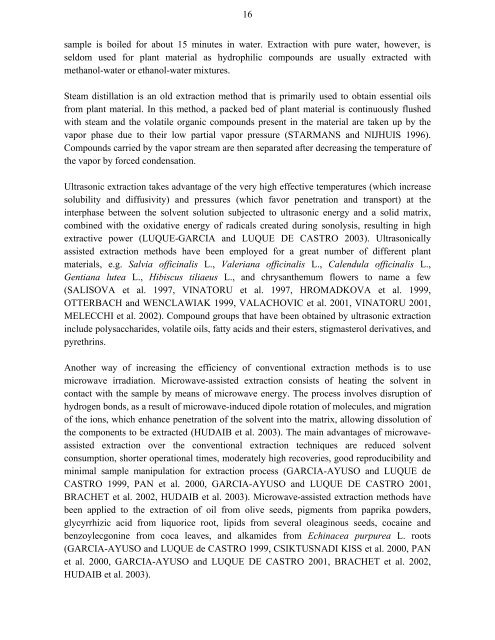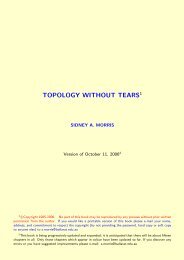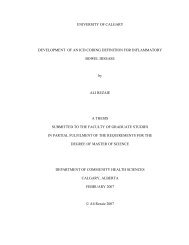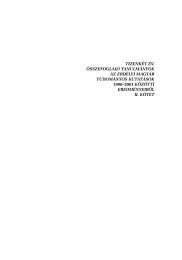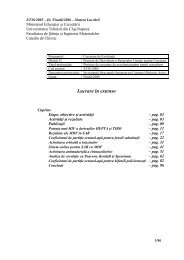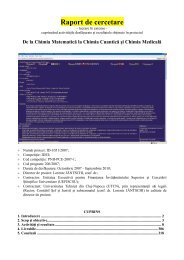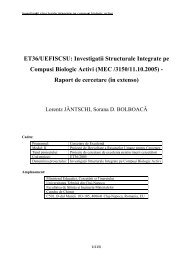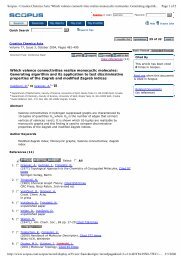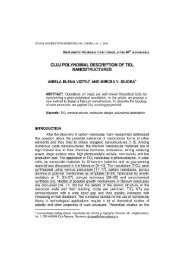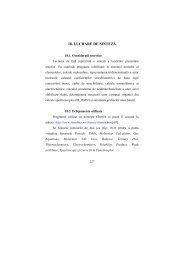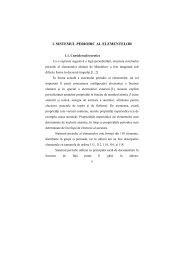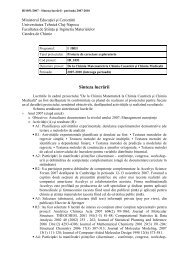Extraction and Planar Chromatographic Separation Techniques in the
Extraction and Planar Chromatographic Separation Techniques in the
Extraction and Planar Chromatographic Separation Techniques in the
You also want an ePaper? Increase the reach of your titles
YUMPU automatically turns print PDFs into web optimized ePapers that Google loves.
16<br />
sample is boiled for about 15 m<strong>in</strong>utes <strong>in</strong> water. <strong>Extraction</strong> with pure water, however, is<br />
seldom used for plant material as hydrophilic compounds are usually extracted with<br />
methanol-water or ethanol-water mixtures.<br />
Steam distillation is an old extraction method that is primarily used to obta<strong>in</strong> essential oils<br />
from plant material. In this method, a packed bed of plant material is cont<strong>in</strong>uously flushed<br />
with steam <strong>and</strong> <strong>the</strong> volatile organic compounds present <strong>in</strong> <strong>the</strong> material are taken up by <strong>the</strong><br />
vapor phase due to <strong>the</strong>ir low partial vapor pressure (STARMANS <strong>and</strong> NIJHUIS 1996).<br />
Compounds carried by <strong>the</strong> vapor stream are <strong>the</strong>n separated after decreas<strong>in</strong>g <strong>the</strong> temperature of<br />
<strong>the</strong> vapor by forced condensation.<br />
Ultrasonic extraction takes advantage of <strong>the</strong> very high effective temperatures (which <strong>in</strong>crease<br />
solubility <strong>and</strong> diffusivity) <strong>and</strong> pressures (which favor penetration <strong>and</strong> transport) at <strong>the</strong><br />
<strong>in</strong>terphase between <strong>the</strong> solvent solution subjected to ultrasonic energy <strong>and</strong> a solid matrix,<br />
comb<strong>in</strong>ed with <strong>the</strong> oxidative energy of radicals created dur<strong>in</strong>g sonolysis, result<strong>in</strong>g <strong>in</strong> high<br />
extractive power (LUQUE-GARCIA <strong>and</strong> LUQUE DE CASTRO 2003). Ultrasonically<br />
assisted extraction methods have been employed for a great number of different plant<br />
materials, e.g. Salvia offic<strong>in</strong>alis L., Valeriana offic<strong>in</strong>alis L., Calendula offic<strong>in</strong>alis L.,<br />
Gentiana lutea L., Hibiscus tiliaeus L., <strong>and</strong> chrysan<strong>the</strong>mum flowers to name a few<br />
(SALISOVA et al. 1997, VINATORU et al. 1997, HROMADKOVA et al. 1999,<br />
OTTERBACH <strong>and</strong> WENCLAWIAK 1999, VALACHOVIC et al. 2001, VINATORU 2001,<br />
MELECCHI et al. 2002). Compound groups that have been obta<strong>in</strong>ed by ultrasonic extraction<br />
<strong>in</strong>clude polysaccharides, volatile oils, fatty acids <strong>and</strong> <strong>the</strong>ir esters, stigmasterol derivatives, <strong>and</strong><br />
pyrethr<strong>in</strong>s.<br />
Ano<strong>the</strong>r way of <strong>in</strong>creas<strong>in</strong>g <strong>the</strong> efficiency of conventional extraction methods is to use<br />
microwave irradiation. Microwave-assisted extraction consists of heat<strong>in</strong>g <strong>the</strong> solvent <strong>in</strong><br />
contact with <strong>the</strong> sample by means of microwave energy. The process <strong>in</strong>volves disruption of<br />
hydrogen bonds, as a result of microwave-<strong>in</strong>duced dipole rotation of molecules, <strong>and</strong> migration<br />
of <strong>the</strong> ions, which enhance penetration of <strong>the</strong> solvent <strong>in</strong>to <strong>the</strong> matrix, allow<strong>in</strong>g dissolution of<br />
<strong>the</strong> components to be extracted (HUDAIB et al. 2003). The ma<strong>in</strong> advantages of microwaveassisted<br />
extraction over <strong>the</strong> conventional extraction techniques are reduced solvent<br />
consumption, shorter operational times, moderately high recoveries, good reproducibility <strong>and</strong><br />
m<strong>in</strong>imal sample manipulation for extraction process (GARCIA-AYUSO <strong>and</strong> LUQUE de<br />
CASTRO 1999, PAN et al. 2000, GARCIA-AYUSO <strong>and</strong> LUQUE DE CASTRO 2001,<br />
BRACHET et al. 2002, HUDAIB et al. 2003). Microwave-assisted extraction methods have<br />
been applied to <strong>the</strong> extraction of oil from olive seeds, pigments from paprika powders,<br />
glycyrrhizic acid from liquorice root, lipids from several oleag<strong>in</strong>ous seeds, coca<strong>in</strong>e <strong>and</strong><br />
benzoylecgon<strong>in</strong>e from coca leaves, <strong>and</strong> alkamides from Ech<strong>in</strong>acea purpurea L. roots<br />
(GARCIA-AYUSO <strong>and</strong> LUQUE de CASTRO 1999, CSIKTUSNADI KISS et al. 2000, PAN<br />
et al. 2000, GARCIA-AYUSO <strong>and</strong> LUQUE DE CASTRO 2001, BRACHET et al. 2002,<br />
HUDAIB et al. 2003).


